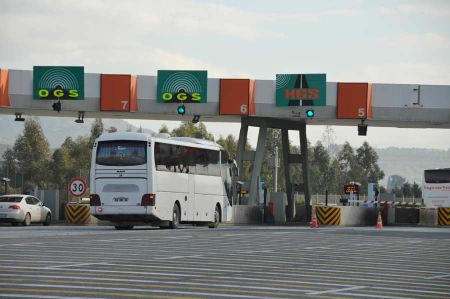Serious change in the way tolls are paid in Turkey
- Written by Portal Editor
Anyone traveling through Turkey as a holidaymaker or business-traveller in a car, truck or motorhome will encounter toll stations on the Turkish motorways that are comparable to European standards.
In Turkey, too, road tolls must be paid depending on the length of use or in the case of special constructions, such as one of the Bosphorus bridges. This does not take place in the form of a vignette, as is known from Austria, Switzerland, Slovenia or other countries, but in the form of so-called OGS devices, which must be purchased and registered for the respective vehicle, then topped up via a bank account is automatically read out at the toll stations and the amount to be paid is debited. So far so good, a functioning system, even in the Far East. However, it is hardly a worthwhile purchase for the visitor, especially since a deposit may have to be paid.
KGS system has also been replaced
Since January 1st of this year 2013, this KGS system has also been replaced by a new system. KGS cardholders can still use their existing credit, but should get the HGS card, which is similar to a vignette, as soon as possible. For this purpose, the relevant vehicle must also be registered via the toll stations. The Turkish Post PTT has taken on this task at the toll stations. If the vehicle is registered and its user is noted by providing their cell phone number, you also pay a certain amount for this, which can then be driven away. This HGS system has also been automated. When you pay the amount, e.g. 35 TL, you receive the HGS vignette, which however contains an electronic chip, stick the vignette into the interior of the vehicle at the level of the rear-view mirror and the journey can begin.
Please don't drive into the toll booth too quickly
If you have used motorways several times, your cell phone number now comes into play. If the account balance is too low, a notification will be sent via SMS indicating that recharging is necessary. This can happen at the toll booth, at any PTT post office and/or at many banks that have joined in the distribution of the road user fee. You can also get this chip vignette long before your trip to Turkey; it is also offered in the branches of Turkish banks (Ziraat Bank) in Germany, certainly at short notice also via ADAC or other providers, and the Internet will also offer options at short notice.
- Category 1 applies to motorcycles and vehicles with a wheelbase of less than 3.25 meters
- Category 2 applies to vehicles with two axles and a wheelbase of more than 3.25 meters
- Category 3 applies to vehicles with more than 3 axles
Motorway Cat. 1 Cat.2 Cat.3 Cat
Edirne – Istanbul 5.50 5.50 10.00
Istanbul – Bolu 5.50 5.50 10.00
Bolu – Ankara 2.25 2.25 4.25
Izmir – Aydin 2.75 2.75 4.25
Cesme – Izmir 1.75 1.75 4.25
Icel – Gaziantep 3.11 5.50 5.50
Ponzati – Camtepe 1.75 1.75 4.25
Erzin – Andana 1.75 1.75 3.75
Istanbul 3.25 8.00 - Fatih Sultan Mehmet Bridge* and Bogazici Bridge
* The fee is only charged from the European to the Asian part of Turkey. Conversely, the passage is free.
Today only these 6 motorway routes are subject to tolls; all others, including the expressways, are toll-free. The toll to be paid is calculated based on the length of use; tunnels or other expensive constructions are also toll-free. The only exceptions are the Bosphorus Bridges in Istanbul, both suspension bridges, the Bosphorus Bridge and the Fatih Sultan Mehmet Bridge in Istanbul, which connect the European part with the Asian part of the city. The bridges are only subject to toll towards the Asian side, the other way round the passage is free!
Another Turkish specialty!
The European user of Turkish motorways has certainly noticed an extraordinary peculiarity that must be urgently stopped.
- And no matter how slowly the vehicle is traveling, it uses the middle lane!
We drivers have asked about this oddity several times - but there has not yet been a plausible answer. This behaviour, which is also consistently practiced by intercity buses and many trucks, represents a very significant driving risk. Often the right lane is completely devoid of traffic for dozens of kilometres. The middle lane is heavily used and the use of the left lane by overtaking buses or trucks at least has a braking effect. It is understandable that many drivers use the free right lane to overtake.
We don't understand why there isn't a right-hand driving requirement with corresponding notices on the routes. Too often we have seen really dangerous driving manoeuvres due to this strange behaviour. Perhaps this report will also help a little to put an end to this bad habit.
Please read as well:
The Hospitallers - expansion and consequences to Europe
St Hilarion - the mighty Crusader Castle
